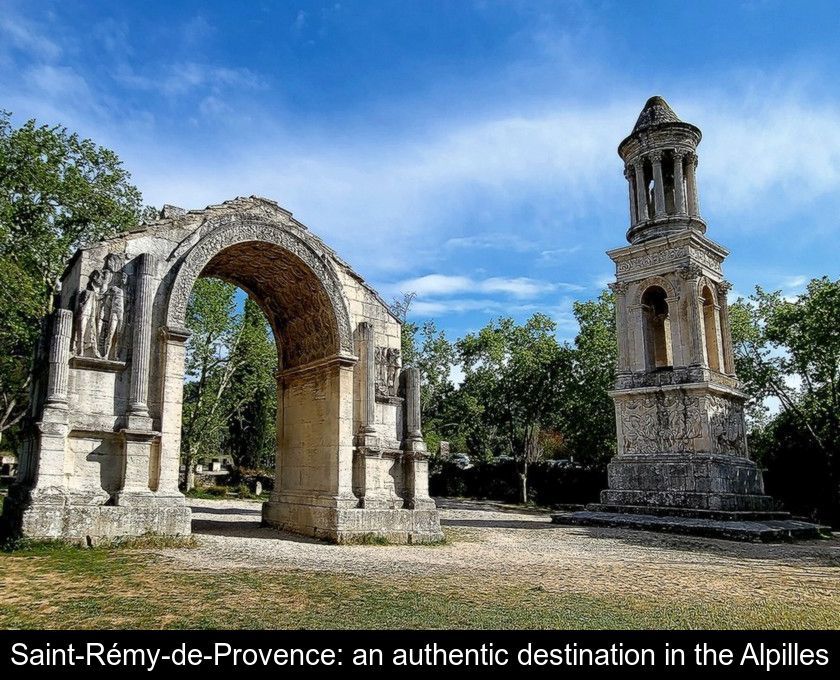Saint-rémy-de-provence: An Authentic Destination In The Alpilles
30 km south of Avignon, Saint-Rémy-de-Provence is considered the small capital of the Alpilles. This small town, nestled in the Regional Natural Park of the same name, cultivates the Provençal art of living. In addition to its local traditions and regional products, you will appreciate the beauty of its landscapes and the light that notably inspired Vincent Van Gogh. Here are 5 good reasons to discover this destination.
1- To experience the gentle way of life in Provence
Saint-Rémy-de-Provence, the birthplace of Nostradamus, is also a typically Provençal destination where the sun shines 300 days a year. Attached to its land and southern lifestyle, this destination perpetuates traditions like the transhumance on Whit Monday and the Provençal Christmas market.
Apart from these picturesque events, this small town in the Bouches-du-Rhône celebrates local gastronomy, AOC Coteaux-des-Baux-en-Provence wines, and local products such as olive oil, which is also protected by an AOC, throughout the year.
2- To taste local products
In Saint-Rémy-de-Provence, tourism is inseparable from the wine and olive-growing activities of the town. Wednesday is the day of the large Provençal market in Saint-Rémy. More than 100 merchants set up their stalls on Place de la République and the adjacent boulevards.
All the regional products are highlighted at this market: olives, olive wood kitchen utensils, Cavaillon garlic braids, Marseille soaps, lavender, and pottery.
But, amidst this true whirlwind of colors and scents, the most emblematic product of this region remains undoubtedly olive oil! If you want to learn more about this precious nectar, you can visit the Moulin du Calanquet within an olive grove of over 10,000 trees. The owners produce monovarietal olive oils, meaning they are made from a single variety of olives such as salonenque, verdale, or picholine.
3- To discover an ancient Roman city
Just before entering Saint-Rémy-de-Provence, stop on the Route des Baux de Provence (D5) to visit the Glanum Archaeological Site and Les Antiques.
You can still see the remains of a Gallic oppidum there, as well as monuments from a Roman Empire city: a mausoleum called the "Tomb of the Julii" and a 1st-century triumphal arch.
You can continue your visit by strolling through the picturesque streets of Saint-Rémy, dotted with small shaded squares and beautiful old fountains. Many mansions have been converted into museums or art galleries.
4- To follow in the footsteps of Vincent Van Gogh
Saint-Rémy-de-Provence and its surroundings also offer landscapes and a light that have inspired many artists. The most famous of them is, of course, Vincent Van Gogh, who painted more than 150 canvases in the surrounding countryside!
To walk in the footsteps of the painter, you can take a stroll through the places he painted, but also visit the Saint Paul Cloister where the artist stayed from May 1889 to May 1890. This typical site of Provençal Romanesque art now houses a museum retracing the period when Vincent Van Gogh was interned there after cutting his earlobe. You can see a moving reconstruction of the painter's room.
5- To explore the hometown of Nostradamus
The alleys of Saint-Rémy-de-Provence hold many surprises for the curious walker. Among the remarkable buildings of the town, the Saint-Jacques hospital was erected in 1646 within the old fortifications.
Nostradamus was born not far from there, at 6 rue Hoche, to a father who was a notary and a mother whose maiden name was Rémy. At the end of the street, the Saint-Martin collegiate church stands out with its Gothic architecture.
At Place de la République, you will find the Gounod hotel, where the famous composer stayed at the invitation of the poet Frédéric Mistral. Place Favier is also worth a visit for its beautiful mansions, as well as Place aux Herbes, where wheat was once threshed.
The Mistral de Montdragon hotel, recognizable by its 16th-century medieval tower, now houses the Alpilles museum. Next door, the Sade hotel hosts the remains of the Glanum archaeological site. After exploring the city and discovering its treasures, you can take a well-deserved break on a terrace to sip a Mauresque (a mix of pastis and orgeat syrup) or a Gambetta lemonade (non-alcoholic).








